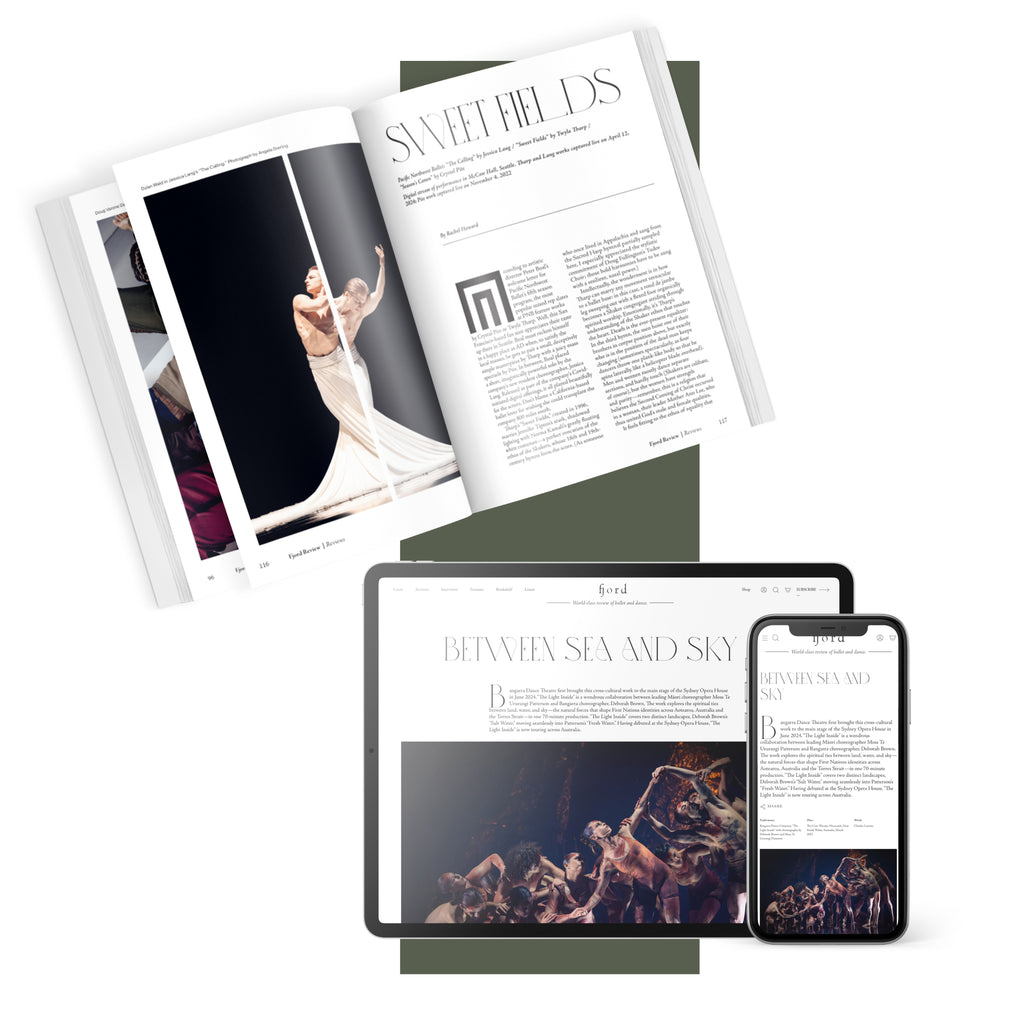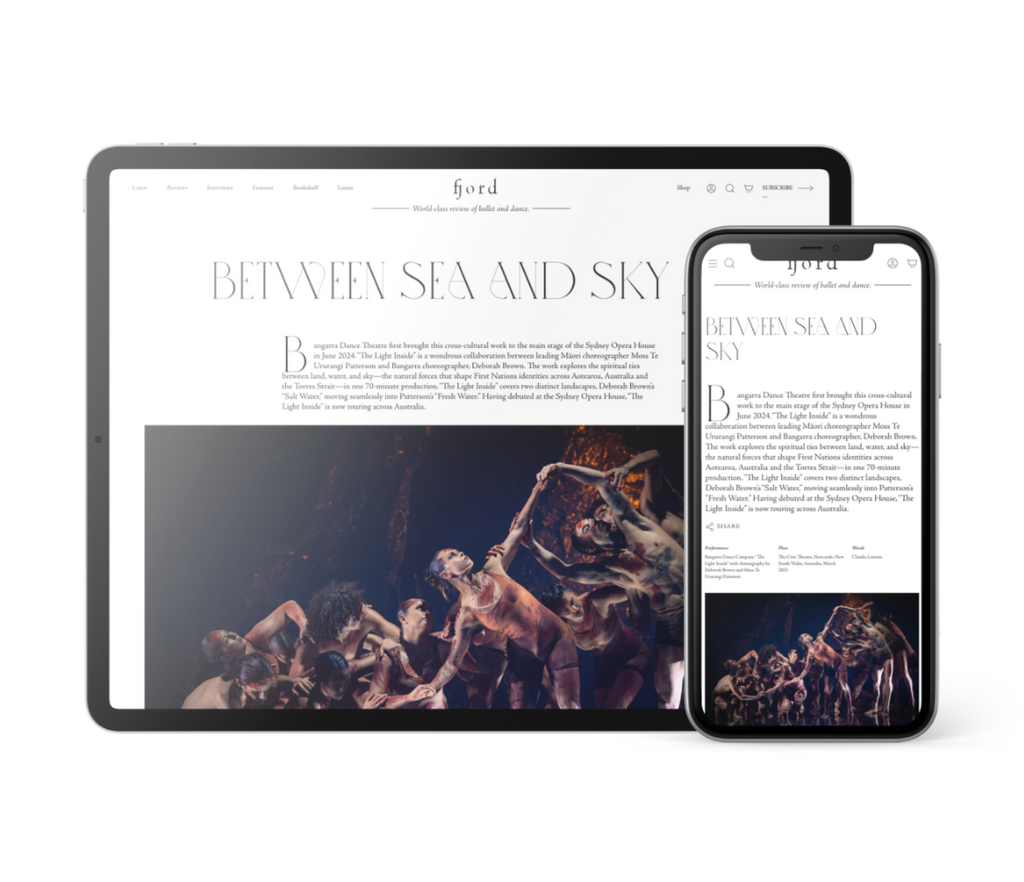Some of the kids had more formal dance training than others, which led to more choreographic options. An ability to articulate through the feet, go on demi-pointe, turn faster, or perform complicated jumps added to the children’s choreographic palettes, but didn’t necessarily make pieces better—which was interesting. However, when expanded dance facility aligned with good choreographic instincts, the works were elevated. Agnes Khoury used her deeper skill set effectively in “Hello World,” set to music by John Zorn. A repeated collapsing grand plié motif was a neat, moody accent—as was her excellent pairing of electric guitar reverb with her wildly cascading black locks. Romy Kim put speedy running balancés to the triplet notes in the Maurice Ravel score of her solo “Chasing Rainbows.” In a pastel pink chiffon dress, her little chassés en tournant, sautés, and open-armed lilting-about evoked Isadora Duncan.
Some of the kids were better choreographers than dancers or actors, and some were better actors or dancers than choreographers. Excitingly, tiny June Magro excelled in all three areas. Her solo “A Chance to Dance” was a delight from start to finish. Styled in a floral skirt, choker, and cardigan—a nod to her folksy, Spanish-inflected flute and guitar music by Emile Desportes—she balanced euphoric cavorting with crystal-clear mime. She pretended to splash water on her face, skip on river stones, and pick flowers and put them behind her ear. Sometimes she grabbed her skirt to flourish a hop step or suavely put her hands on her hips to a strummed chord. This pastoral frolic was structurally sophisticated, yet innocently joyous. She looked like a kid just dancing around outside for the love of it, but obviously, so much artfulness was involved. What a hard tone to strike, even for professionals. My son excitedly leaned over to me afterwards and said, “that was great!” It really was.
All the choreographers in the showcase were girls, bar one. Since women choreographers are underrepresented in the adult dance world, this was a promising case of one-sidedness. It will be a boon to the art form if some of them can stick with it, and I look forward to seeing how these fledgling choreographers continue to develop their skills as they grow. Growth, incidentally, was a big factor in the show. As Robbins explained in a mid-show speech, these pieces premiered at the end of the kids’ school semester last June and many of the girls barely fit into their costumes this January. Robbins noted that one girl couldn’t move as fast as her smaller self of seven months ago and had adjusted her steps accordingly. I found it touching to think that these children have artistic snapshots of their bodily growth. Wouldn’t it be cool if every kid had a record of dances to go alongside their growth chart wall notches and collections of finger paintings in basement boxes?












What a surprising and great idea to write about this. Lovely.